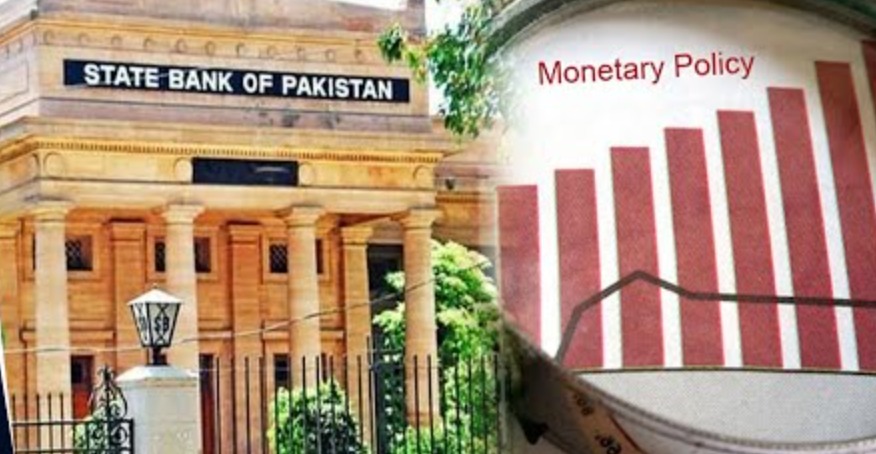KARACHI – The State Bank of Pakistan (SBP) has cut the key policy rate by 200 bps to 13 per cent.
As per the decision taken by the Monetary Policy Committee (MPC) on Monday, the new policy rate will be effective from December 17, 2024.
SBP’s MPC has decreased the key policy rate after taking into account various indicators, including the headline inflation which declined to 4.9 per cent on year on year basis in November 2024.
This deceleration was mainly driven by continued decline in food inflation as well as the phasing out of the impact of the hike in gas tariffs in November 2023. However, the Committee noted that core inflation, at 9.7 percent, is proving to be sticky, whereas inflation expectations of consumers and businesses remain volatile.
To this effect, the Committee reiterated its previous assessment that inflation may remain volatile in the near term before stabilizing in the target range. At the same time, the growth prospects have somewhat improved, as reflected by the recent uptick in high-frequency indicators of economic activity.
Overall, the Committee assessed that its approach of measured policy rate cuts is keeping inflationary and external account pressures in check, while supporting economic growth on a sustainable basis.
The MPC noted the current account remained in surplus for the third consecutive month in October 2024, which, amidst weak financial inflows and substantial official debt repayments, helped increase the SBP’s FX reserves to around $12 billion.
Global commodity prices remained generally favourable, with positive spillovers on domestic inflation and the import bill. Credit to the private sector recorded a noticeable increase, broadly reflecting the impact of ease in financial conditions and banks’ efforts to meet the advances-to-deposit ratio (ADR) thresholds.
Based on these developments, the Committee assessed that the impact of the cumulative reduction in the policy rate from June 2024 is beginning to unfold and will continue to materialize over the next few quarters. In this context and taking into account today’s decision, the Committee noted that the real policy rate remains appropriately positive to stabilize inflation within the target range of 5 – 7 per cent.
In the agriculture sector, downside risks to the overall crop outlook have somewhat subsided. This is based on better than expected cotton arrivals since the last MPC meeting and encouraging initial information, including satellite images, pertaining to sowing area of the wheat crop.
Also, activity in the industrial sector is gaining further traction. Key large-scale manufacturing sectors – such as textile, food, automobiles, POL and tobacco – were already depicting strong growth till Q1-FY25. Moreover, the latest high-frequency indictors – such as domestic sales of cement, auto, fertilizer and POL products – suggest that this momentum in industrial activity is continuing.
The knock-on impact of these improved prospects for the commodity-producing sectors and reduced inflationary pressures would support the services sector as well. Going forward, improving business confidence and easing financial conditions are expected to support economic growth. Considering these developments, the MPC expects the real GDP growth in FY25 to remain in the upper half of the projected range of 2.5 – 3.5 per cent.
The current account continued to improve and posted a surplus of $0.2 billion during July-October FY25, driven by robust workers’ remittances and strong export performance. Exports grew by 8.7 percent, mainly driven by HVA textile, rice and POL exports.
At the same time, favorable global commodity prices helped contain the import bill despite a sizeable increase in import volumes. Supported by narrowing gap between interbank and open market exchange rates and enabling policies, workers’ remittances remain strong.
FBR revenues grew by 23 per cent y/y during July-November FY25. This is, however, substantially lower than the required growth to achieve the annual tax collection target. On the expenditure side, the declining yields will lead to a sizeable saving in interest payments on domestic debt compared to the budget estimates. These lower interest payments will help the government to contain the fiscal deficit; however, achieving the targeted primary surplus would be challenging.










